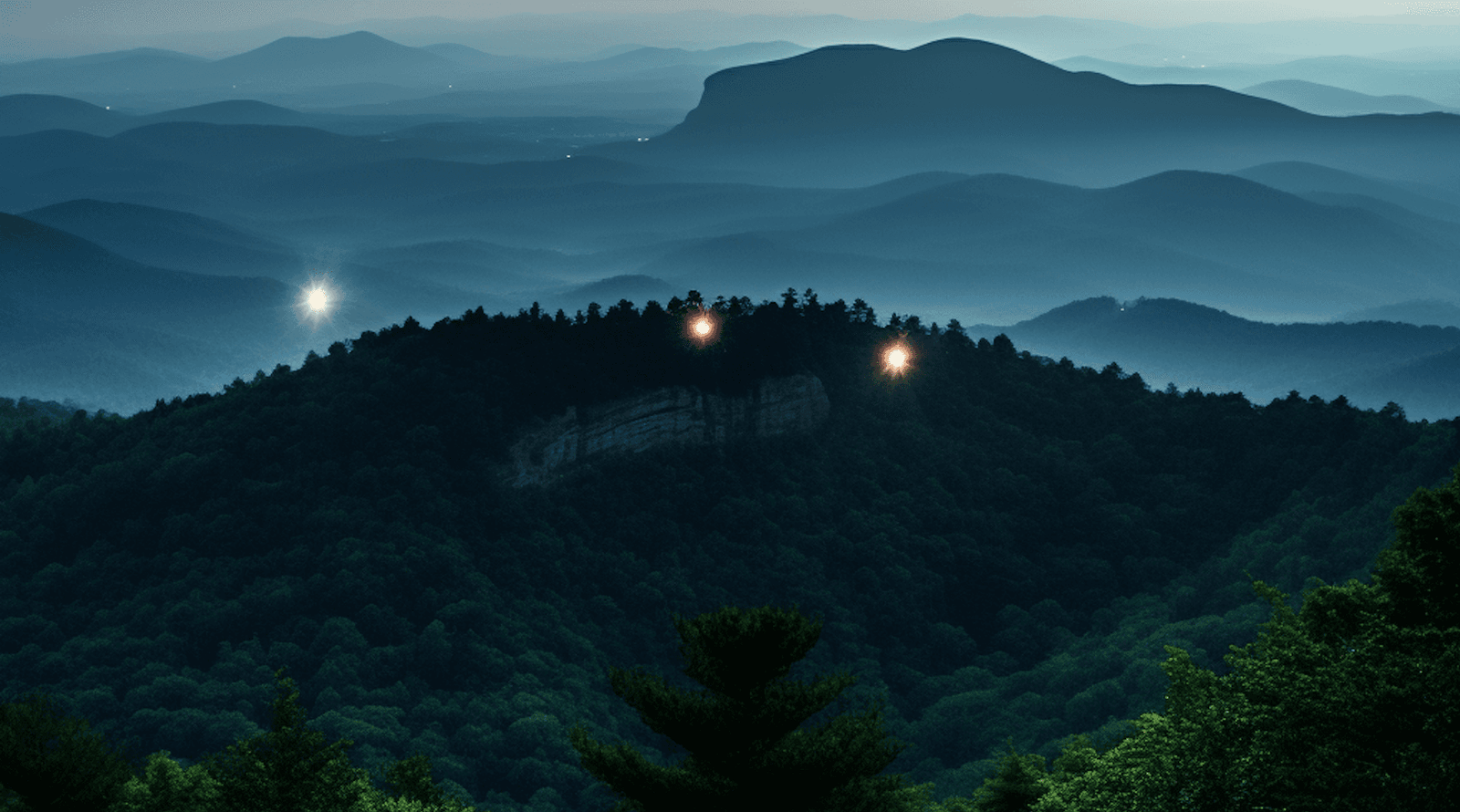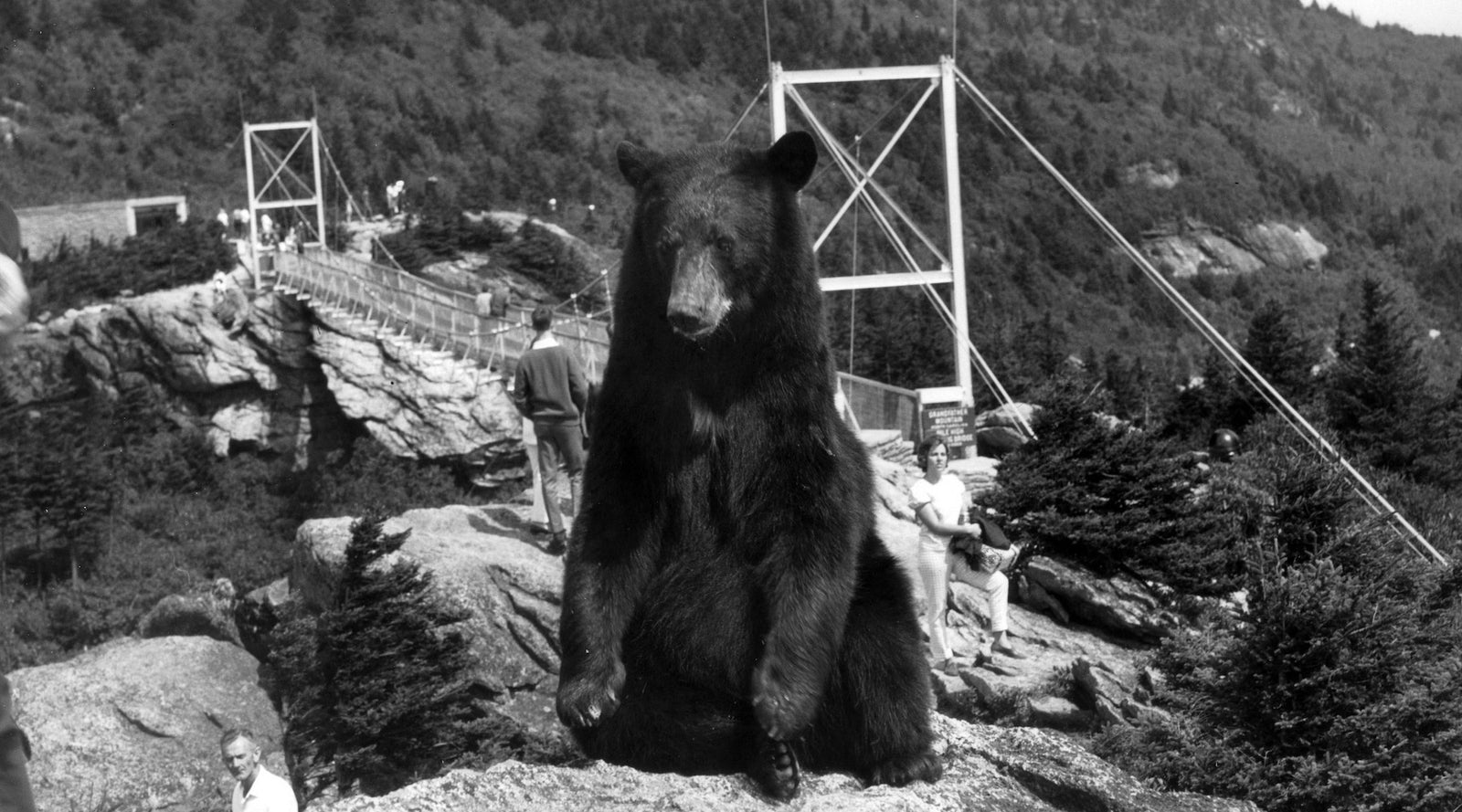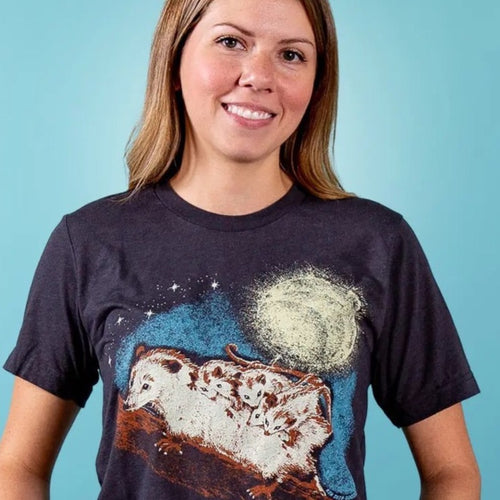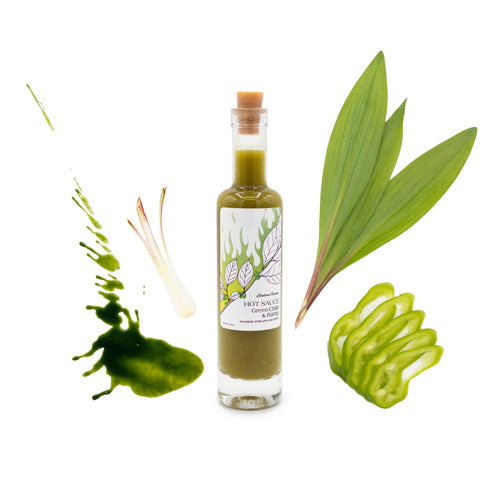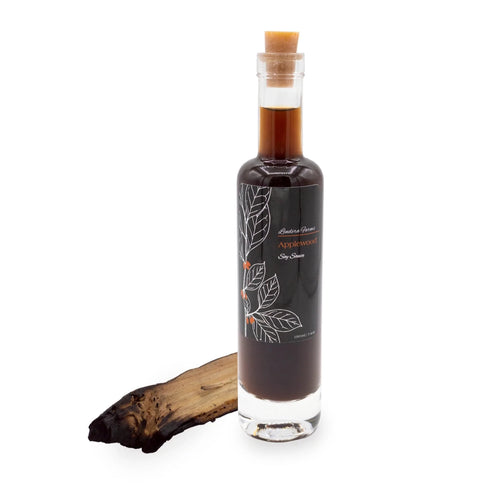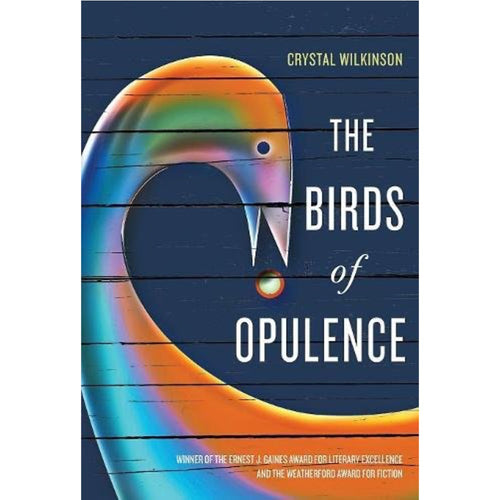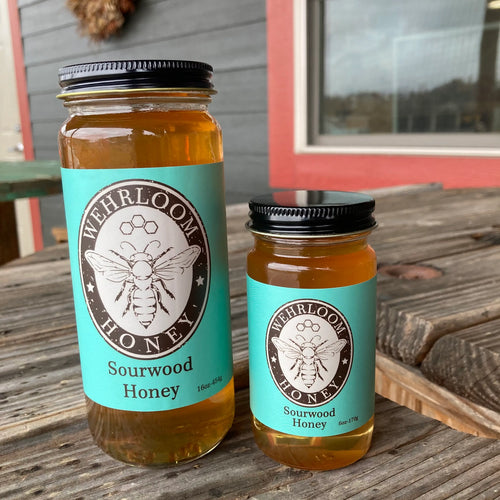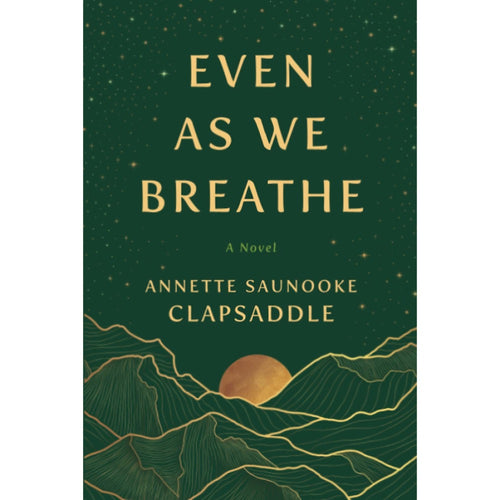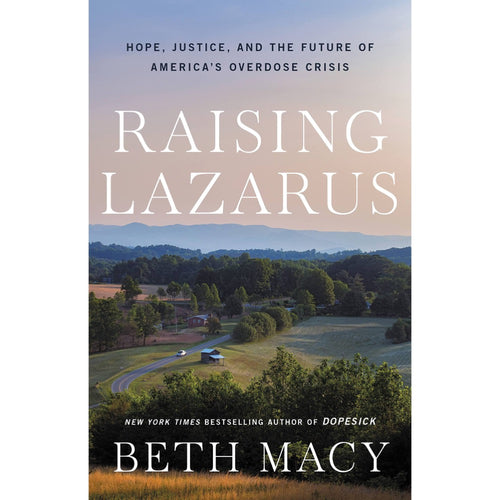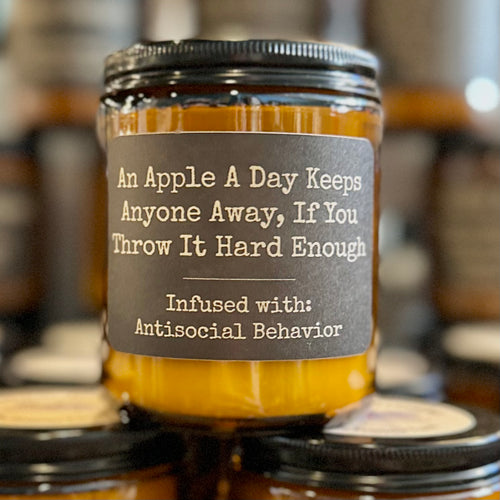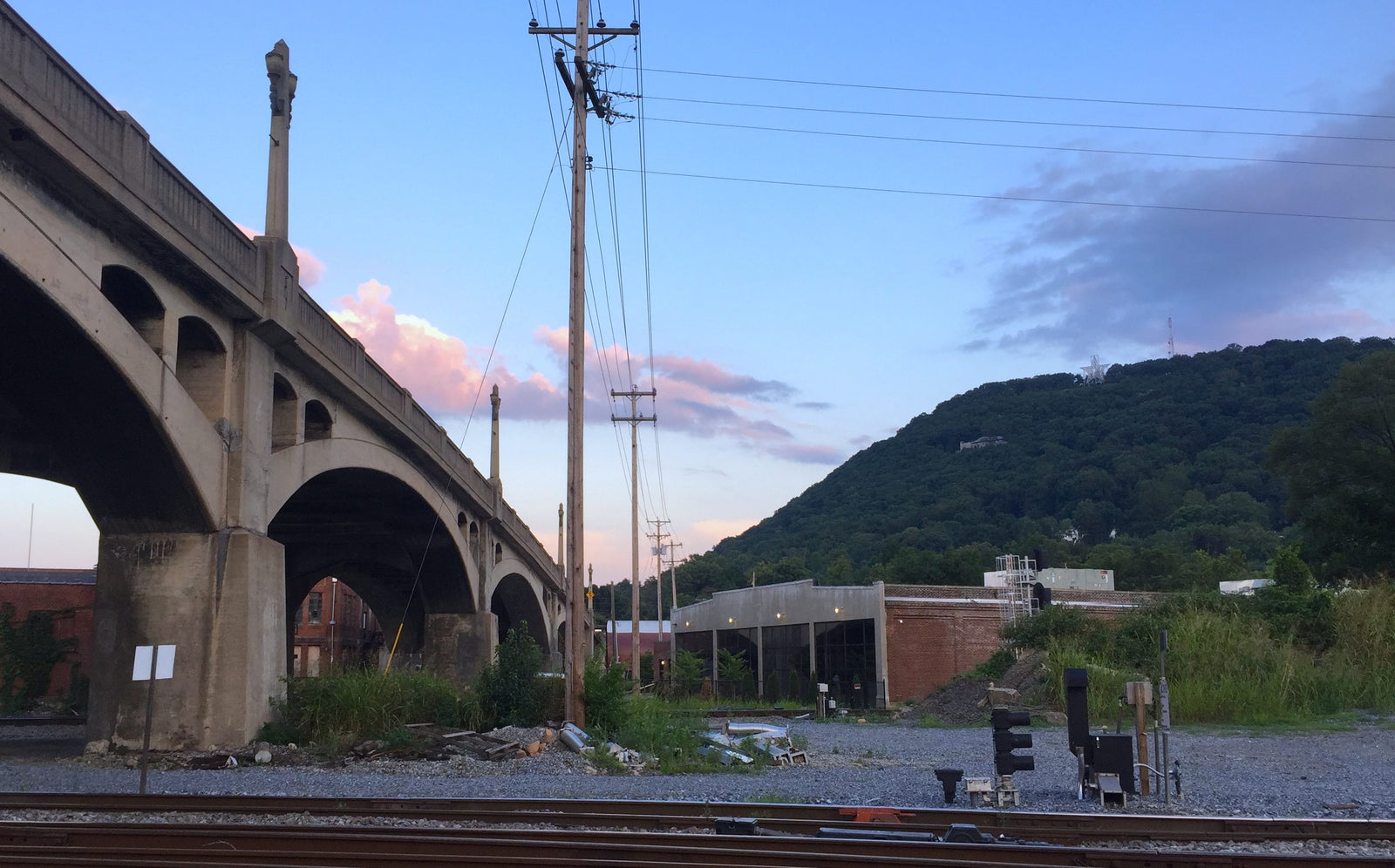
I had no business biking up a mountain. I mean I regularly commute on my bicycle, but that's along a flat stretch of paths and roadways in the Washington, D.C. metro. A five foot pitch seems like effort there, so I don't know why I looked to Roanoke's Mill Mountain and thought, "Yeah, I can bike that."
I headed across the Walnut Avenue bridge, which leads to the mountain, and figured it was a fitting start. My hometown is a city of bridges. They arch over our river and railroad tracks, and this one was old. Dating to 1927, it was built in a vaguely art deco style. Biking along it, I thought how it added architectural grandeur to the gritty warehouses and railroad tracks it spanned. On its far side, it dawned on me why.
The bridge ends in a neighborhood full of American foursquares, classic homes from the same period. Too big and nice for workingmen, these houses were built for securely middle class families, maybe bosses from those warehouses or mid-managers from the railroad. Whoever they were, when they crossed that fancy concrete span, past its stately obelisk light fixtures, they did more than move from place to place. They literally rose over a gritty workaday district, surrounded by touches of luxury, and set foot on higher ground, in the charming neighborhood that lines Mill Mountain.
From there the land pitched up, gently at first, until, following directions I found online, I turned onto Sylvan Road. I can't imagine why some long dead urban planner thought a residential street should be vertical, but this one was so steep it forced me off my ride. I walked up the incline, pushing the bike and feeling like a loser. The mountain had beat me before I fully reached it.
At the next corner, where the land leveled, I paused to catch my breath and realized the neighborhood had changed. On my left stood a gorgeous tutor-inspired house. A classically French one was on my right. While the ones downhill were nice, these verged on mansions. I later read that this divide was by design. When the area was developed, more modest homes were built low, closer to the railroad tracks and river. Spots like this were reserved for the town's elites, high enough to enjoy unspoiled views and a cool mountain breeze.
I lingered to enjoy that breeze and the view myself, high enough now to see halfway across the valley, I looked northwest, toward the neighborhood where I was raised, which spreads out from a messy strip called Williamson Road. When we moved there in the 1970s, it was defined by massage parlors and triple-x theaters. Though the sex-industry was curbed in intervening decades, the area remains rough and tumble, one wealthier people only visit to buy new tires or look for authentic ethnic food.
To be fair, they can find both there. Growing up, we played with kids from Vietnamese and Mexican families. School friends were of Lebanese and Indian descent. Others could claim mountain lineages dating back at far as mine, but instead of hillside farmers, their ancestors had been slaves.
I don’t think this is most people’s vision of Appalachia—blacks, whites, Asians, and middle easterners living alongside one another in an aging suburb—but no one batted an eye. We just shopped together at K-mart and sat on one another’s porches, gabbing. At school, we learned, ate, laughed, and sang together. It wasn’t until high school, where whites were the ethnic minority, that we began to absorb how unusual our mix was, but even then, we thought it was funny. Irreverent kids that we were, we joked about all the stereotypes—the gun-toting white hillbillies, the watermelon eating blacks, the lazy Mexicans. To us, these were nothing more than absurd tropes created by old people.
In time, I realized that those tropes are still real in some minds, that racism is alive in America. I’d see police treat African Americans more violently than others; see whites don Klan hoods and one of them gun down black parishioners as they prayed; see some of these zealots forego their hoods altogether and reveal hate's true face on the streets of Charlottesville.
Their acts are horrific. We must rail against them, but even so, bigots are the true minority. While everyone struggles against internalized notions about other groups, the idea of the blatantly hateful South holds an outsized place in the American psyche.
Former senator Jim Webb has a thought or two on this. In his watershed book “Born Fighting: How the Scots-Irish Shaped America,” he said, ”The redressing of wrongs to African-Americans was not a Southern redneck phenomenon at all. It was an American phenomenon, for which the Southern redneck has been held up as the whipping boy.”
Study after study backs him up. For instance, as a group, poorly educated southern whites are most likely to endorse legalizing discrimination in home sales. That plays into a lot of stereotypes until you look at the numbers. Where 30 percent of poorly educated southern whites support it, 28 percent of all white people nationwide do too. That’s just two percentage points in difference, well within most margins of error, suggesting that Webb is right. Racism is a national issue.
On interracial marriage, the South is a tiny bit behind the rest of the country at 83 percent approval, but that's amazing given the national average hadn't even broken 50 percent in 1995. On residential segregation, Roanoke and other Appalachian cities including Charlottesville, Asheville, Knoxville, and Charleston are actually more integrated—in some cases, much more integrated—than their big city counterparts.
So I have reason to be proud of Northwest Roanoke. For all its auto body shops and vape stores, it's also home to a thriving multiracial community that complicates the Appalachian narrative.
But northwest wasn't the direction I was biking. I turned my wheels the other way and continued my climb with the homes around me growing larger and larger until they stopped abruptly, ceding to a thicket of trees and an old stone gate, the real edge of the mountain.
Today, we call the road beyond this gate "Old Mill Mountain Road," but about a century ago, it was brand new. After a 1924 update, it was, in fact, the longest paved concrete road in the world, and it attracted tens of thousands of visitors each year. Those who could afford it stopped at the gate to pay their 25 cent toll (about $3.50 today), the rate for a leisurely drive up the mountainside. This was, of course, long before car ownership was assumed and the Roanoke Valley was scared by strip mall parking lots. Back then, automobiles were an extravagance and cruising along a scenic mountain road was a novelty.
To anyone who paid to drive this stretch in its early days, my bike ride might seem passé, exactly the kind of effort motor vehicles allowed them to escape. Yet, today, we're realizing some important things were lost to modernization. Exertion is the new treat, leaving our cars and using our own muscles to move from place to place.
The number of people who bicycle at least once a year in the U.S., for instance, has increased by about 22 percent since 2012. That's a dramatic jump, but even as self-propelled transit has grown more popular, it's also turned into a symbol of our nation's class divide. Those who peddle for leisure are often people with privilege—degrees, disposable income, good insurance. Obviously, they can afford the equipment. The Marin road bike I rode up the mountain did cost a few hundred bucks. But cost isn't really that prohibitive. One glance at Craigslist, and you'll see that a used bike can be bought for cheap.
A bigger obstacle is tribalism. I think of my working class relatives. Few of them would consider peddling across town for fun or even errands, and it's not because they can't afford bikes. It's that everyone they know (excluding me) drives, even when driving means riding in a car wrapped with ads (like on this page) or some clunker car that threatens to break down, even when their cholesterol levels push 270 and they know they should get more exercise. In their minds, yuppies and hipsters bike, not everyday people like them.
Last year, bike lanes were proposed along Williamson Road, the main drag at the heart of my childhood neighborhood, and several thousand people signed a petition fighting it. Bike lanes might take away car lanes, they claimed, and don't they just lead to gentrification anyway?
Looking to my other haunt, the D.C. metro, it's hard to argue the point. Amenities like bike lanes, classically designed street lamps, and public landscaping have been key to attracting wealthier residents. While D.C. developers are required to reserve a percentage of new units for affordable housing, it's never enough, and this problem is nothing new. People without much money have always lived in places wealthier people didn't want—swamps, back country, the entirety of Appalachia. Through the 1800s, aristocratic lowlanders pushed new immigrants into our mountains because it was a wilderness filled with perceived hazards like mountain lions and native people, ones they themselves weren't about to "tame."
By the 1920s, though, that perception had begun to shift. A few Appalachian communities like Asheville were becoming havens for American elites, and, for better or worse, many towns had a true upper class. In Roanoke, a West Virginia coal barren set his sights on Mill Mountain. Soon after moving to the area, William Henritze and his brother bought most of the city's nearest mountain from Roanoke Gas & Water. Over the years, the company had tried everything to turn Mill Mountain into an exclusive attraction. It had built a hotel, an observation tower, even an Alps-style lift, none of which drew guests in adequate numbers.
Today, all those amenities are gone. What remains from the era is the toll gate, which was recently restored by civic groups, and Henritze's 1929 mountainside home, Rockledge, which stopped me in my tracks.
Though I'd admired this house from the valley floor all my life, I'd never been close enough to see its true grandeur. Built from stone in an Italianate style, it sits on a slim plateau pressed close to the former toll road. Graced with balconies and terraces on all sides, the mansion must have impressed every passerby. Likely, they did like me and tried to peer through the windows. Maybe they were hoping for a glimpse of one of Roanoke's most notable residents or maybe they were just curious about the house's interior.
Restored a few years ago by its current owners, two area doctors, it's said to feature exotic wood paneling and inlaid floors, which were carefully preserved during the renovations. As a lover of old buildings, I'm thrilled to hear that someone is giving this grand home proper care, but as someone who was raised poor, I couldn't help but wonder what this house meant to my forbearers, relatives who lived during Henritze's time. Was Rockledge a beautiful home to them, a structure to admire, or a symbol of a life they'd never obtain?
I could have stared at that house all day and still found no answers, plus the sun was getting lower. I peddled onward, uphill, until my calves began to burn. Mill Mountain is not a huge climb, just about 930 feet from its base to the top, but, on a bike, it was enough work for me to welcome another short stop when I saw a clearing. As I snapped the below photo, I realized that from this height, I could no longer make out neighborhoods. Upper crust and low rent ones looked about the same. Largely concealed by trees, the whole city was upstaged by that big blue sky.
I pushed on through the mountain's last hard bends and was panting by the time the ground leveled. The forest floor was replaced by grass, and the twisting roadway thankfully turned into a flat, easy path. As I biked across what was once Roanoke's most exclusive mountaintop, I sucked in deep lungfuls of cool air to slow my breathing and began to wonder where that rarified hotel once sat, a business that used high prices to keep out many people and instituted rules to segregate it from others.
A 2006 management plan for the area explained that blacks were historically barred from Mill Mountain. "Only rarely did Mountain Park offer 'colored days,'" it said, "during which African Americans were allowed access to the park's amenities, and then only with ample warning and apologies to white patrons."
Though I admired the mountain's early elegance, few people I know would have been welcome there. Except on those rare "colored days," black friends would have been turned away, and my family could have hardly afforded it.
I have just one living relative who was around back then. When I mentioned this bike ride to my 85-year-old grandmother, she said, "Didn't there used to be a hotel or something up there?"
Clearly, she never stepped foot inside it, though she did climb the mountain. With friends, she'd take excursions to the top. "We hiked it," she told me and didn't have to say why. I knew she was raised without a car and was pretty sure none of her pals had one either.
It would be another day or two before I talked to grandma and realized that having sore legs atop Mill Mountain was a family legacy. Still, as I got off my bike, I stretched mine under one of the mountain's newest amenities—an 88 1/2 foot tall neon star. Built as a holiday publicity stunt in 1949, the Roanoke Star was an immediate hit. It drew so much attention the area merchants association decided to keep it up and lit year-round. It has since become my hometown's symbol, one I've seen adorn everything from t-shirts to trash trucks, and, as far I know, visiting it has always been free.
At its base, I watched tourists and locals mingle. A young black couple asked an elderly white man to take a photo of them. Seeing that he was old enough to be one of my grandmother's contemporaries, to remember when that couple would have been barred from the mountain, I watched for his reaction.
He didn't miss a beat. "Smile," he told them and then took his own advice, beaming as he snapped the picture and then lingering to chat when he was done. I wasn't close enough to hear their conversation, but the old man stood, relaxed and animated, facing the star as he talked. The couple stood arm-in-arm, facing the golden-washed valley. And, as the sun began to set, I stood, realizing that I faced a steep ride down.
Before getting on my bike, I snapped a final photo. It showed the platform that overlooks my hometown, filled that day with all kinds of Roanokers and visitors—different colors, different economic classes, different physical abilities—all enjoying this beloved mountain. It was a view that I thought defined our age. Even as we struggle against vestigial hate, the twenty-first century is already distinct from the last, a time when base cruelty was so widespread it was enshrined in our rules and laws. A sight like this would have been impossible for most of that century, and, for me, it was worth every sore muscle, the tough ride up. This view I would have gladly paid 25 cents to see.
Special thanks to Melinda Mayo in the City of Roanoke's Communications Office and Pete Eshelman At Roanoke Regional Partnership for help with this piece. Also, big thanks to my new Marin bike. You're as tough as you are pretty.



